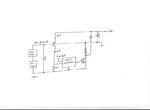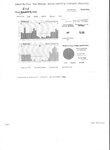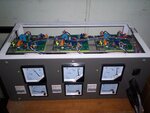kathmandu
Full Member level 5
Hello,
I want to redesign my solar off-grid network by reconfiguring the PV panels (series/parallel) and by building a high efficiency battery charge controller.
Speaking of battery chargers, the buck converter seems to be the obvious (and most used) circuit topology but, when it comes to active components (mosfets) selection, I found it hard to get a high Vds, high current and low Rdson ones.
By comparison, both buck and boost switches must have the same current rating (dictated by the maximum inductor current) but the one used in a boost topology has a much lower Vds stress hence it's easier to source a low Rdson one.
Another circuit trivia is to isolate the solar source (PV panels) from the battery when the sun is OFF. A buck topology can't do that by default so you may need an extra switch (thus extra loses) to accomplish that.
As I could place the charge controller very close to the PV panels (hence wire loses are not a problem), do you think it's a better idea to use a boost topology instead? (low Vds / low Rdson mosfets)
By the way, the battery bank voltage is 48V and I have 12 x 230W PV panels installed for now (Voc = 36V, Isc = 8A).
I want to redesign my solar off-grid network by reconfiguring the PV panels (series/parallel) and by building a high efficiency battery charge controller.
Speaking of battery chargers, the buck converter seems to be the obvious (and most used) circuit topology but, when it comes to active components (mosfets) selection, I found it hard to get a high Vds, high current and low Rdson ones.
By comparison, both buck and boost switches must have the same current rating (dictated by the maximum inductor current) but the one used in a boost topology has a much lower Vds stress hence it's easier to source a low Rdson one.
Another circuit trivia is to isolate the solar source (PV panels) from the battery when the sun is OFF. A buck topology can't do that by default so you may need an extra switch (thus extra loses) to accomplish that.
As I could place the charge controller very close to the PV panels (hence wire loses are not a problem), do you think it's a better idea to use a boost topology instead? (low Vds / low Rdson mosfets)
By the way, the battery bank voltage is 48V and I have 12 x 230W PV panels installed for now (Voc = 36V, Isc = 8A).


